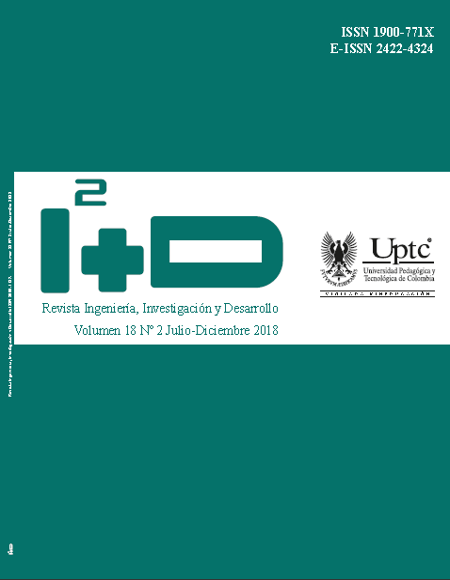Mathematical model to manage the inventory of the blood bank of a hospital center

Abstract
In this article, a mathematical model is developed for the planning and control of the red blood cells inventory in the blood bank of a hospital center (3rd level) located in Cali, Colombia. This model pretends to provide an adequate level of service to users, reducing operating costs incurred in the expiration of blood units and in procurement from external suppliers, contributing to solve the problems present in El Valle del Cauca and some regions of Colombia, with lacks of blood banks. At first place, the demand of red blood cells is characterized. Then, the construction of the mathematical model is made, based on linear programming by goals where random variables are used to consider the expiration and substitution for compatibility of the blood units and a treatment of flexible restrictions is given to the objectives. Each objective demands penalty for being spent, obsolete and external purchases of blood units. It was possible to use the model of 8087 variables through AMPL algebraic modeling, obtaining specific results for each blood group. The operability and results of the model were verified with a high degree of reliability through discrete simulation where several scenarios were recreated. In conclusion, this model is a formal and structured tool for the planning and control of the blood supply linked to other hospital centers.
Keywords
Blood supply chain, Control of blood inventories, Mathematical model
Author Biography
Jairo Arboleda Zúñiga
Grupo de Investigación en Sistemas
Bryan Fernando Salcedo Moncada
Grupo de Investigación en Sistemas Aplicado a la Industria (GISAI)
References
OMS, Organización Mundial de la Salud (2017, Jun 22). Disponibilidad y seguridad de la sangre a nivel mundial, [Online]. Disponible en: http://www.who.int/es/news-room/fact-sheets/detail/blood-safety-and-availability
INS, Instituto Nacional de Salud (2013, Dic 31). Informe de Red Nacional de Bancos de Sangre y Servicios Transfusionales del Instituto Nacional de Salud, [Online]. Disponible en https://www.minsalud.gov.co/sites/rid/Lists/BibliotecaDigital/RIDE/IA/INS/ins-informe-anual-red-sangre-014.pdf
The World Bank (2017). Total population, [Online]. Disponible en https://data.worldbank.org/indicator/SP.POP.TOTL
El País.com.co. (2017, Dic 12). Alerta por disminución de reservas de sangre en hemocentros de Cali, [online]. Disponible en: http://www.elpais.com.co/valle/hemocentros-de-cali-en-alerta-por-disminuicion-en-reservas-de-sangre.html
El País.com.co. (2018, Ene 12). Preocupación por baja donación de sangre en Cali, [online]. Disponible en: http://www.elpais.com.co/cali/preocupacion-por-baja-donacion-de-sangre-en.html
Arboleda, “Modelo de inventarios para la administración de la cadena de suministro en el banco de sangre de una clínica de la ciudad de Santiago de Cali”, tesis de Maestría, Ingeniería, Universidad del Valle, Santiago de Cali, 2013.
M. Lichtman, J. Prchal, K. Kaushansky, M. Levi, L. Burns y J. Armitage, “Transfusión medicine”, en Williams Hematology, Mcgraw Hill: Estados Unidos, 2000, pp. 1647-1659.
B. Brown, “Basic laboratory Techniques” En Hematology: Principles and procedures, Lea & Febiger: Estados Unidos, 1999, pp. 16-32.
República de Colombia, Ministerio de Protección Social (2011, Dic 26) Política Nacional de Sangre, [Online]. Disponible en: https://www.invima.gov.co/politicas/177-politica-nacional-de-sangre.html
R. Ballou, “Decisiones sobre políticas de inventarios,” en Logística Administración de la cadena de suministro, E. Quintanar, Pearson Education: México, 2004, pp. 412-423.
C. Vidal, “Introducción a los pronósticos de demanda,” en Fundamentos de gestión de inventarios, Universidad del Valle – Facultad de ingeniería, Universidad del Valle: Colombia, 2005, pp. 33-46.
B.F. Salcedo Moncada, M. Ramírez Fernández y J. Arboleda, “Pronóstico de componentes sanguíneos en un hemocentro de la ciudad de Santiago de Cali”, In VIII Encuentro de investigación formativa, Universidad Pontificia Bolivariana, Palmira, Colombia, 2017, pp. 107-118.
M. Valencia, J. Correa y F. Díaz, “Modelo de inventarios que utiliza el modelo lineal dinámico bayesiano para el pronóstico de demanda”, Revista Ingeniería Investigación y Desarrollo, vol. 15, no. 1, pp. 39-47, julio 2015. DOI: https://doi.org/10.19053/1900771X.3937
K. Katsliak y S. Brailfor, “Using simulation to improve the blood supply chain”, The Journal of the Operational Research Society Oxford, vol. 58, no. 2, pp. 219-228, diciembre 2007. DOI:https://doi.org/10.1057/palgrave.jors.2602195
A. Pereira, “Blood inventory management in the type and screen área”, Vox Sanguinis, vol. 89, no. 4, pp. 245-250, octubre 2005. DOI: https://doi.org/10.1111/j.14230410.2005.0070.x
V. Fano y A. Longres, “Inventario mínimo de componentes sanguíneos en un servicio de hemoterapia de la ciudad de La Habana”, Revista Cubana de medicina militar, vol. 27, no. 1, pp. 39-43, 1998.
J. Arboleda, “Mathematical and stochastic models for inventory control in blood banks: Literature Review” Inventum, vol. 12, no. 22, pp. 53-65, junio 2017.
Z. Hosseinifard y B. Abbasi, “The inventory centralization impacts on sustainability of the blood Supply chain”, Computers & Operations research, vol. 89, no. C, pp. 206-212, 2018. DOI: https://doi.org/10.1016/j.cor.2016.08.014
A. Hendalianpour, “Mathematical Modeling for Integrating Production – Routing Inventory Perishable Goods: A Case Study of Blood Products en Iranian Hospitals”, en Dynamics in Logistics, M. Freitag, H. Kotzab, J. Pannek, Dynamics in Logistics LDIC 2018. Lecture Notes in Logistics: Germany, 2018,
pp. 125-136. DOI: https://doi.org/10.1007/978-3-319-74225-0_16
L. Duong, L. Wood, & W. Wang, “A multi-criteria inventory management system for perishable & substitutable products”, Procedia Manufacturing, vol. 2, pp. 66-76, 2015. DOI: https://doi.org/10.1016/j.promfg.2015.07.012
J. Blake y M. Hardy, “A generic modelling framework to evaluate network blood management policies: The Canadian Blood Services experience”, Operations Research for Health Care, vol. 3, no. 3, pp. 116-128, 2014. DOI: https://doi.org/10.1016/j.orhc.2014.05.002
Gurobi Optimization. (2018, May 1). Using AMPL with Gurobi, [online]. Disponible en: http://www.gurobi.com/products/modeling-languages/ampl